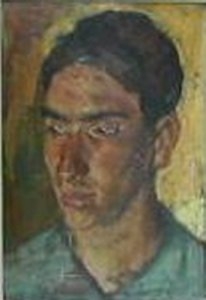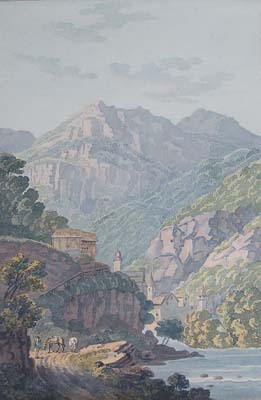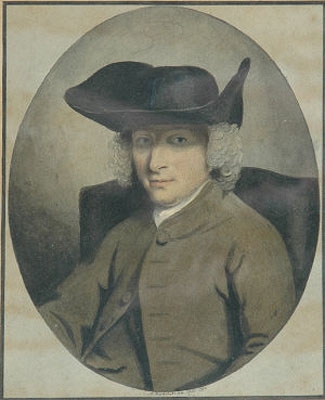Mervyn Levy was a writer, critic and teacher of art.
During the 1950s his teaching skills led to his own BBC television series, Painting For Housewives, which ran for several years, and for a while helped make him a household name. For many years he also appeared regularly on BBC radio arts programmesincluding Kaleidoscope and regularly interviewed sculptors and paint-ers for the BBC radio archives.
It was at this stage that he discovered his need to write about art, and for the remainder of his life this was his raison d''etre. Over the next 30 years he published 25 books, from Painting for All (1958) and A Dictionary of Art Terms (1963) to ThePaintings of D.H. Lawrence (1964), Whistler Lithographs (1975), and acclaimed studies on the work of Gaudier- Brzeska, Ruskin Spear and Carel Weight. He also became the great authority on Lowry, and wrote several books on the taxcollector- turned-artist''s paintings and drawings as well as becoming friends with him.
From 1962 to 1966 he was the features editor of The Studio magazine, and during this time interviewed Dali in his house at Port Lligat in Spain. Levy sat enthralled as Dali told him what would happen to his wife Gala when she died. Gala''s flesh will be carefully pared from the bone, very finely minced, seasoned, sprinkled with powdered rhinoceros horn and eaten raw with a garnish of sea urchins. Her bones will be used to build a tower to her memory, supported with crutches, and embellished with bronze replicas of my moustaches. An invitation to the feast was promised by the artist and for many years Levy awaited the telegram summoning him to his destiny. But the lobster never rang.
Mervyn Levy was born in 1914 in Swansea, South Wales where he went to school with Dylan Thomas, who became a lifelong friend - Levy''s portrait of him is in the National Portrait Gallery in London. Art would become Mervyn Levy''s driving force, and in1935, whilst a student at the Royal College of Art, he was awarded the Sir Herbert Read Prize for Drawing at the annual students'' exhibition. Wyndham Lewis presented him with an envelope containing his pounds 2 prize.
During this time Levy shared a flat in Bohemian Chelsea with Dylan Thomas, with whom he spent drunken evenings, discussing how many mice it would take to pull a train from London to Glasgow. Thomas would terrify Levy with stories of giant worms wriggling through his eye sockets, his pet phobia since childhood. Some nights they would go to Augustus John''s home and while John was slumbering take money from his wallet to pay for further drunken revelries.
Then the Second World War came and Levy attended the Royal Military College at Sandhurst, from which he was commissioned into the Infantry in 1941, becoming a Captain in the Royal Army Educational Corps. After the war he found himself returning to the arts, as an overseas arts lecturer to the War Office, with the honorary rank of Lieutenant-Colonel, and completing tours of Gibraltar and Germany.
On leaving the army he embarked on a series of teaching jobs, first as the art tutor at the Adult Education Department, Bristol University, then at the Royal West of England Academy, Bristol. He combined these posts with teaching at the Department of Extra-Mural Studies, London University.
During the 1970s and 1980s he fell in love with the Art Nouveau period and set out to write a book on it. At the turn of the century the distinctive wares sold by Liberty were a strong influence on popular taste, and, for many, the name of Libertybecame synonymous with the Art Nouveau movement. It was this forward- thinking that Levy related to, and the Regent Street store became the centrepiece for his 1986 book, Liberty Style, revealing for the first time to a wider audience the names andhistory of the companies and designers who created the products of this wondrous time.
He also wrote many introductions to catalogues, exhibitions and books on subjects including Scottie Wilson and the Yugoslav artist Rabuzin. This week sees the publication of a study of the artist Colin Moss, another lifelong friend, which is prefacedby Levy''s introduction.
To his friends he was a magician, an intelligent, quick-witted, forward- thinking man, who wrote and spoke with the feeling and skill of a master wordsmith. The freezing fogs that enclose the buds of memory, suspended in their icy cubes offorgetfulness, are instantly thawed by a sound, a taste, a smell, an image. For me, it is usually the visual image that sparks the action of recall. So wrote Levy in Reflections In A Broken Mirror (1982), his fragments of an autobiography.
In his latter years, he would walk down the King''s Road towards the sanctuary of the Chelsea Arts Club, looking like an apparition of Merlin caught unexpectedly in the 20th century. He could conjure up surreal visual images at will, and having dinnerwith him at the Chelsea Arts Club would lead to enthralling evenings listening to his poetic raconteurship.
He would tell of appearing on the television programme The Bookman in 1959 with Edith Sitwell, and how whilst waiting for the studio manager to cue the start, he was fixated by Her long, ivory hands latticed with a network of thin, pale blue veins,moving continuously, spreading into a fan of agitating fingers, each bearing a large ring, some fingers encircled by two. The hands ceased their wanderings and folded into an interlocking pattern of jewels, gold, silver, flesh and bone. They openedagain slowly, came to rest, palm to palm, her fingers tapering upwards. ''A solitary dreaming spire'' I remember thinking . . .
Stories would spill forth of visits to the theatrical costume designer Erte''s flat in Paris, and of the glass-bottomed dove coop above the hallway in which hundreds of white doves paraded and cooed overhead. Then he would describe a discussion withHenry Moore as to what aliens would make of his sculpture. I hope they would find them potently inscrutable and as unyielding in their secrets as life itself. All creation is a mystery, no less to the artist who creates. lt would be a poor artist whofully understood the meaning of his art !
But more than anything, Mervyn Levy was a loyal supporter to numerous people, providing inspiration and hope, arranging exhibitions, finding patrons and helping so many artists achieve their aims by pointing out that their dreams were attainable. He wasa positive man who always looked forward, and up until the last, he was still writing down theories, ideas and lines of poetry.
Ceri Levy
Mervyn Montague Levy, artist, writer, teacher: born Swansea 11 February 1914; married three times (two sons, one daughter); died London 14 April 1996.
Ceri Levy, Obituary: Mervyn Levy. , Independent, 05-17-1996, pp 18.
The artist Bernard Hailstone (1910-1987) was known for his portraits of royalty,members of the Armed Services, musicians and personalities of stage and screen. Among the most memorable are his portraits of Sir Winston Churchill, Peter Ustinov and Sir John Barbirolli. His portrait of Lord Olivier now hangs in the bar of the Garrick Club. Less known, but among his best work, are his paintings of the Blitz. During the war he joined up as a fireman in the Auxiliary Fire Service, along with such artists as Norman Hepple and Leonard Rosoman, and would set up his easel among the bombed London churches and smouldering buildings when there was a lull in the raids.The experiences of these firemen artists were not without their humorous side, for example, when Hailstone helped to extinguish a fire in a warehouse containing barrels of rum near the docks, or when he was disciplined for using His Majesty'';s gas to give himself enough light to complete a picture after dark.
His work came to the notice of Kenneth Clark, who in 1941 asked him to become an official war artist to the Ministry of Transport. During this period he recorded the life of the Atlantic and Mediterranean Convoys. In 1944 he was sent to South East Asia Command (SEAC) to paint Lord Mountbatten and members of his staff. Much of his work is in the Imperial War Museum.
This was the beginning of Hailstone''s career as a portrait painter, which he pursued for the rest of his life - perhaps, some felt, at the expense of his sensitive landscape painting.
Bernard Hailstone came from a large family, in Hadlow,Kent, and he remained in Hadlow for the rest of his life. His elder brother,Harold,was a well-known Punch artist and illustrator. Bernard himself was the seventh child of a seventh son, a fact to which he attributed the good fortune and luck which he enjoyed during his adventurous life.
A generous and warmhearted man, he was very good company,and must have been one of the very few painters who could work with others around him. He was never so happy as when dining in the convivial atmosphere of the Chelsea Arts Club or teaching his pupils during the weekly painting classes he held at this studio.
Teaching for him was perhaps rather more an occasion for getting intouch with others than a strict economic necessity,for he had a cavalier attitude to money and an endearing absent-minded and disorganised way of life which kept his many friends amused.
In spite of this, Bernard Hailstone was much in demand and travelled the globe making new friends through his commissions. He often travelled to New York on the QE2, and would entertain passengers with after-dinner talks on his long and varied career and eminent people he had painted.
Antiques.co.uk Ref: TG7GU6Y4
- Materials:
- Oil on Canvas
- Width (cm):
- 15 x 10 ins. (38 x 25 cms.)














